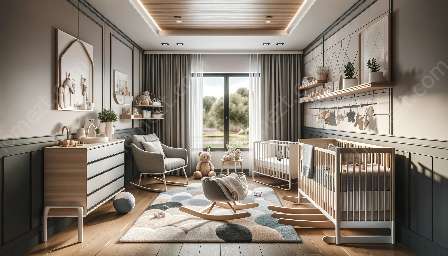Creating a safe and nurturing environment is a top priority when it comes to setting up a nursery. Safety regulations for nursery furniture play a crucial role in ensuring that the space is free from potential hazards and is conducive to a child’s development. In this comprehensive guide, we will delve into the importance of safety regulations for nursery furniture and provide practical tips for nursery furniture placement. Additionally, we will explore how these regulations apply to both the nursery and playroom, offering insights on creating safe and functional spaces for children.
The Significance of Safety Regulations for Nursery Furniture
Safety regulations for nursery furniture are designed to minimize the risk of accidents and injuries, providing guidelines for manufacturers, retailers, and parents to ensure that the products meet safety standards. These regulations encompass various aspects such as design, construction, materials, and durability of nursery furniture to safeguard the well-being of children.
When selecting nursery furniture, it is important to look for certifications and compliance with safety standards, such as ASTM International or the Consumer Product Safety Commission (CPSC). These organizations set stringent guidelines and conduct rigorous testing to evaluate the safety of nursery furniture, including cribs, changing tables, dressers, and chairs. Ensuring that nursery furniture meets these standards provides peace of mind and reassurance that the products are safe for use in a child’s environment.
Guidelines for Nursery Furniture Placement
Proper placement of nursery furniture is essential for creating a safe and functional space for both the caregiver and the child. When arranging nursery furniture, consider the following tips to enhance safety and convenience:
- Keep cribs away from windows: Position the crib away from windows to prevent the risk of entanglement with blind cords and to avoid exposure to direct sunlight, which can affect the baby’s sleep.
- Secure furniture to the wall: Anchor dressers, shelves, and other tall furniture to the wall to prevent tipping or falling, reducing the risk of injury to curious toddlers.
- Maintain clear pathways: Ensure that there are clear pathways in the nursery to facilitate easy movement and minimize the risk of tripping or stumbling over furniture.
- Choose non-toxic materials: Opt for nursery furniture made from non-toxic materials to minimize the risk of exposure to harmful substances, promoting a healthy indoor environment.
Safety in the Nursery and Playroom
Creating a safe and inviting environment extends beyond the nursery and encompasses the playroom. In the playroom, prioritize safety by:
- Organizing toys and play equipment: Keep toys, games, and play equipment organized and stored in designated areas to prevent clutter and minimize the risk of tripping hazards.
- Providing adequate supervision: Establish clear sightlines within the playroom to ensure that caregivers can easily monitor children during playtime, reducing the risk of accidents.
- Implementing safety measures: Install safety gates, cushioned flooring, and outlet covers to create a secure play environment that promotes exploration and learning.
In Conclusion
Adhering to safety regulations for nursery furniture and implementing thoughtful nursery furniture placement is paramount in creating a secure and nurturing environment for young children. By considering safety guidelines and incorporating practical tips, caregivers can ensure that the nursery and playroom are conducive to a child’s well-being and development. Prioritizing safety not only provides peace of mind but also establishes a foundation for a welcoming and harmonious space for children to thrive.


